Connecting to an IEC-102 Meter Through an Ethernet to Serial Converter Configured as a TCP Server:
In this example, IEC 102 Client is used to connect to a meter through a TCP connection. The configuration will include creating a gateway in order to permit the Utility to connect to the meter and download the load profile.
- Step 1: Create a module instance: (Config => Modules => button to the left of Modules => New module)
.png)
- Step 2: Provide a name for the module, in this case IEC102Client, set the module type to Iec102Client, and configure the new module as shown below.
.png)
- Step 3: Set the API and Logger configuration to default. Next, it's time to configure the module to establish which networks will be able to establish communication.
- Step 4: Create a new Channel and enter the Host and TCP port of your energy meter.
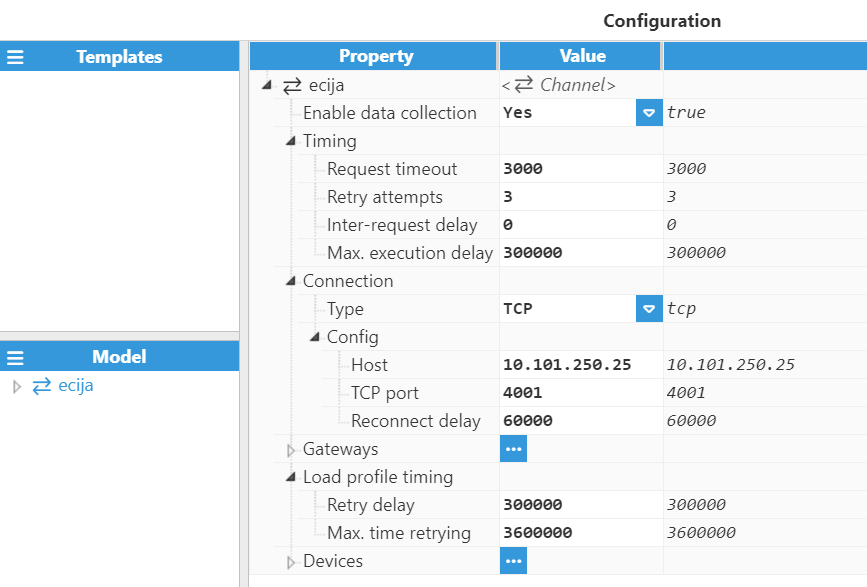
- Step 5: Now, let's create and configure a Gateway for allowing and prioritizing the connection from the Utility as well as preventing collisions.
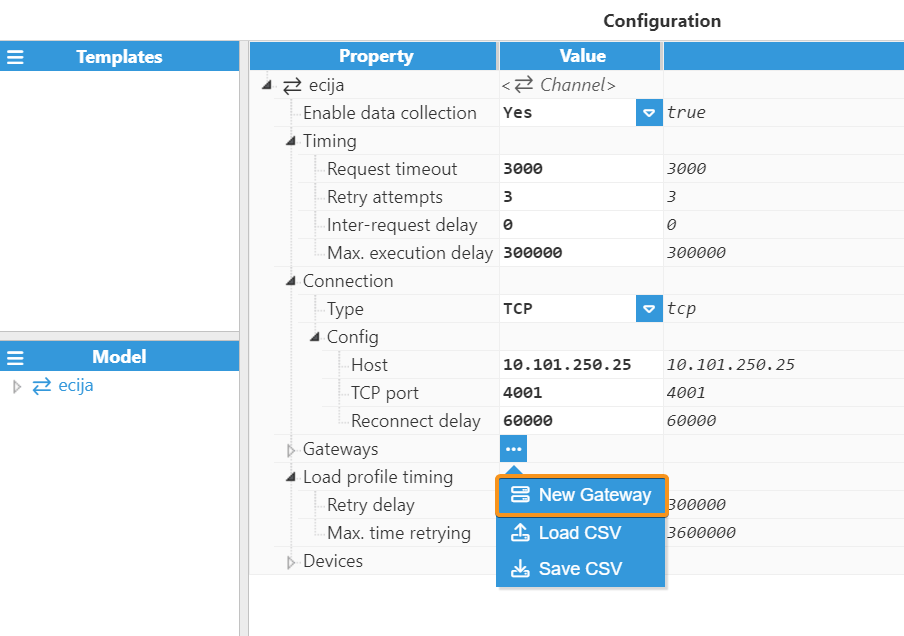
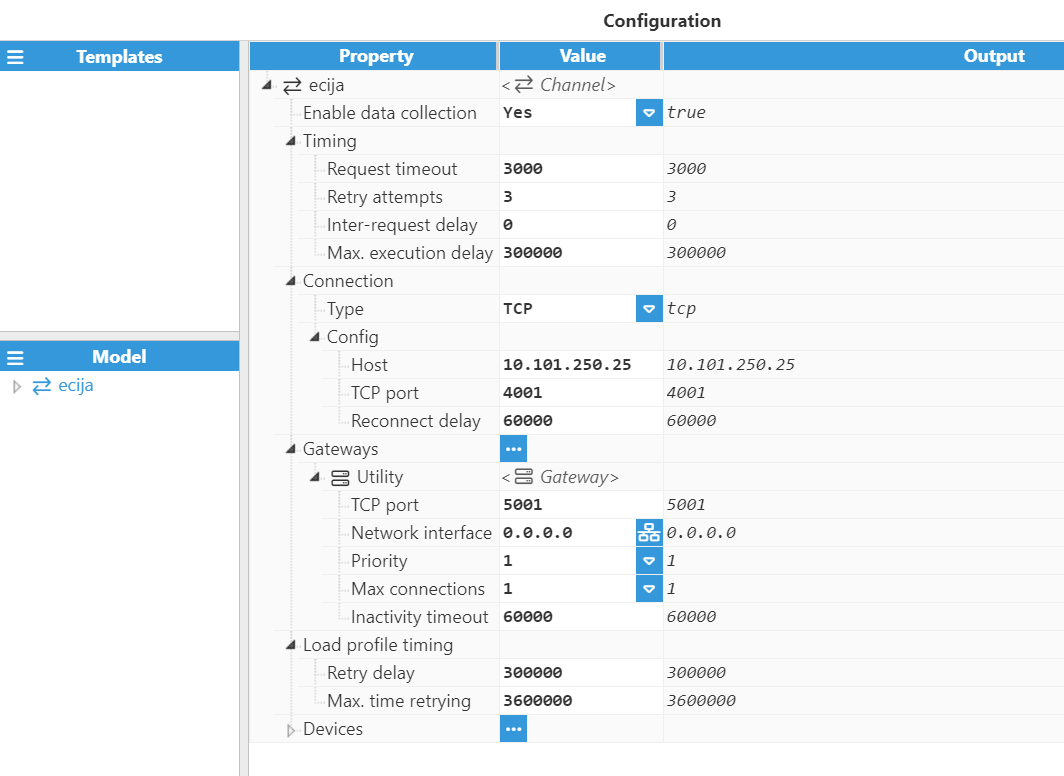
- Step 6: Once the Gateway is configured, let's add a new Device. Every Device requires both a Link address and a Point address, which can usually be obtained from the energy meter display.
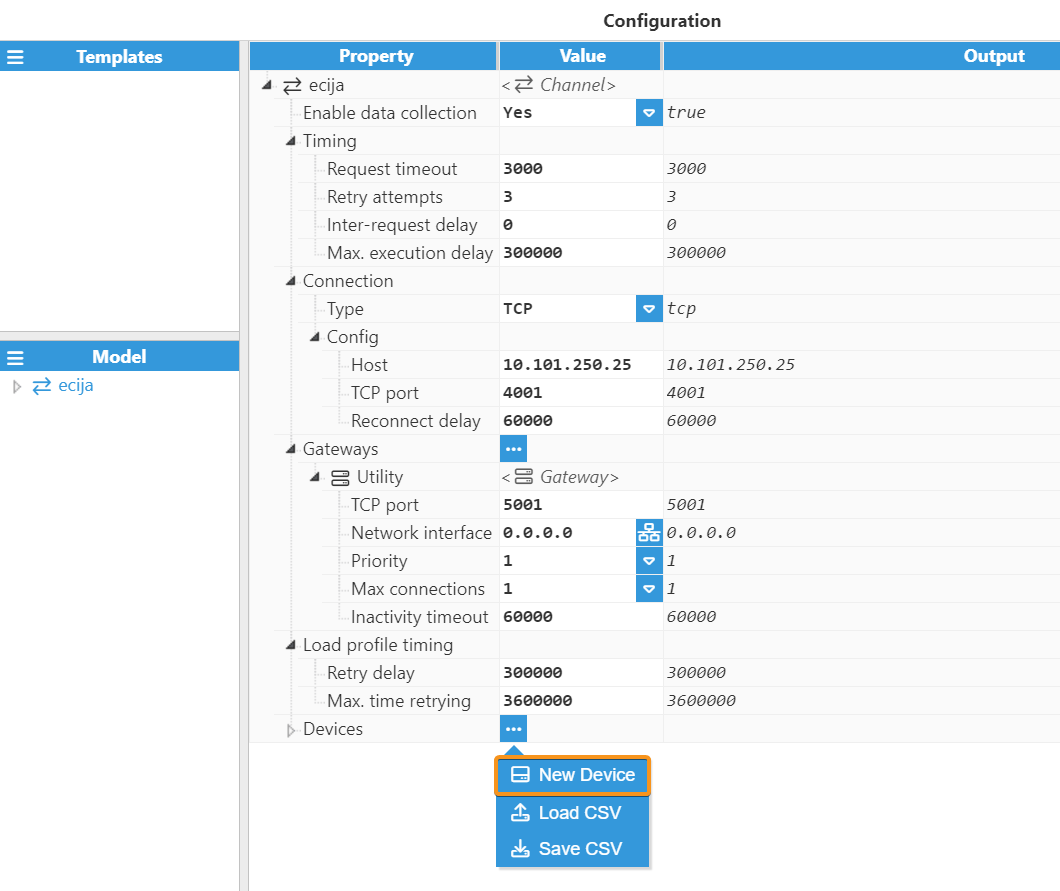
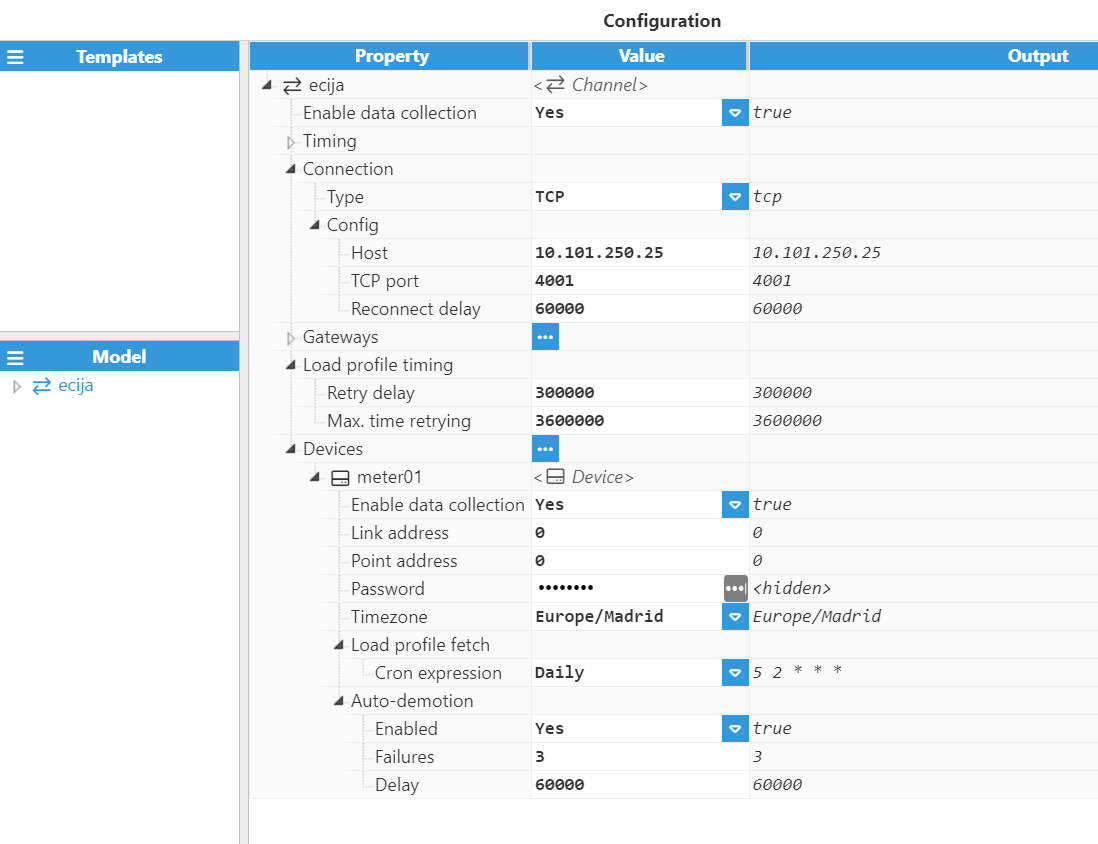
- Step 7: Create and configure some tags to retrieve the data provided by the meter. Refer to this link for more detailed information on creating tags.
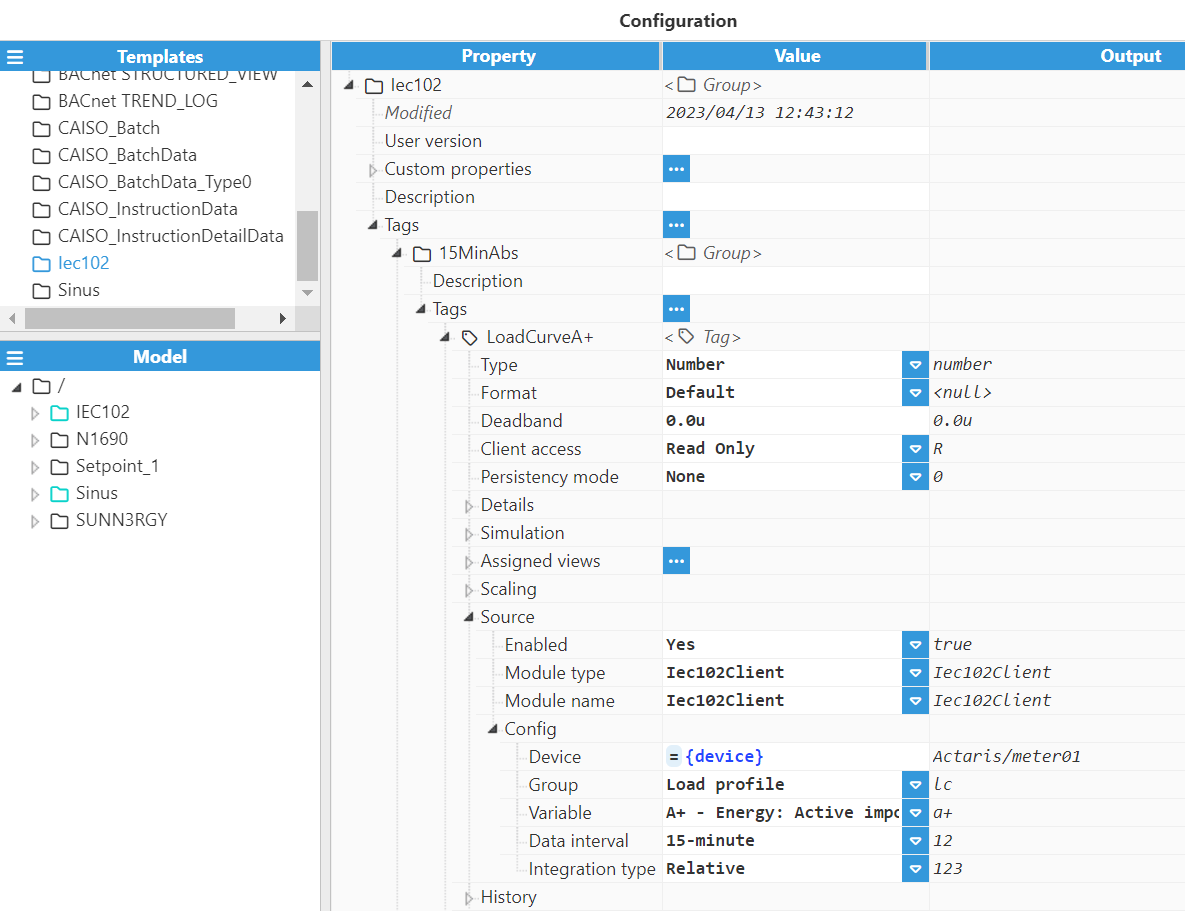
- Step 8: The tags should be now available and displayed with good quality in the Real-Time display panel.
